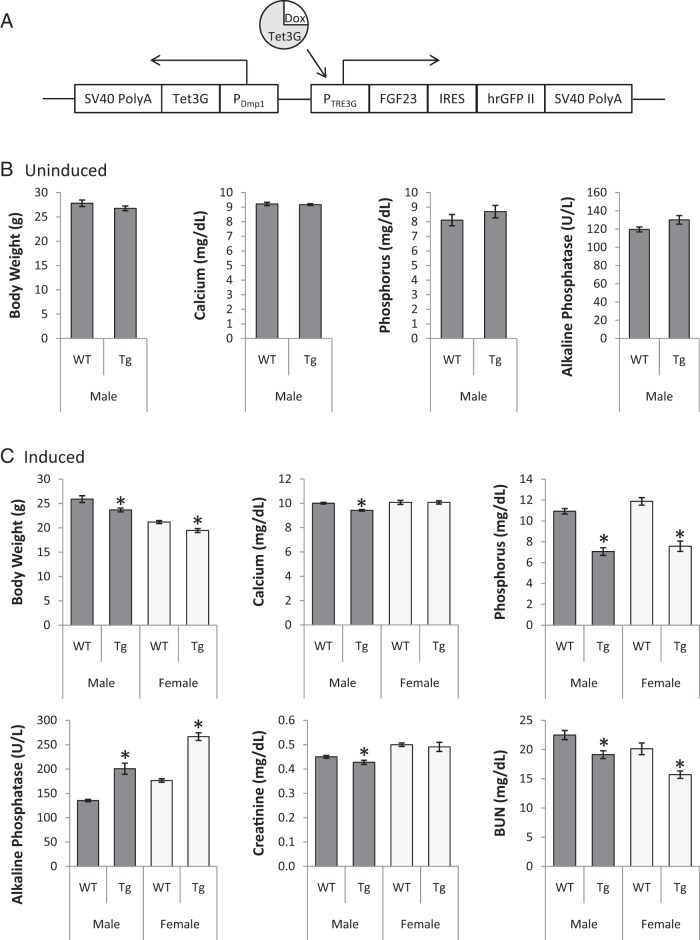Figure 1.
Generation and biochemical phenotype of inducible human FGF23 transgenic mouse. A, Generation of the inducible human FGF23 transgenic mouse. The human R176Q-R179Q FGF23 and hrGFP II genes were cloned into the multiple cloning sites of the pTRE3G-IRES vector, which coexpress the two genes when tetracycline-controlled transactivator Tet3G is present. The CMV promoter in pCMV-Tet3G was replaced with the mouse Dmp1 promoter (PDmp1) to limit the Tet3G expression to osteocytes. The main components of these two vectors were placed in a single vector to generate the transgenic mouse, which expresses mutant FGF23 and hrGFP II (the brighter variant of the humanized recombinant GFP) upon induction with doxycycline. SV40 PolyA signals were added at both ends. B, Serum biochemistries of uninduced transgenic animals. Number of animals = 7 or 8 per group. C) Serum biochemistries in transgenic animals following doxycycline induction. Number of animals = 8–10 per group. Dark gray bars, males; light gray, females. All values are presented as mean ± SEM. P values less than .05 by unpaired t-tests, compared with same-sex littermate controls (*). BUN, blood urea nitrogen.

